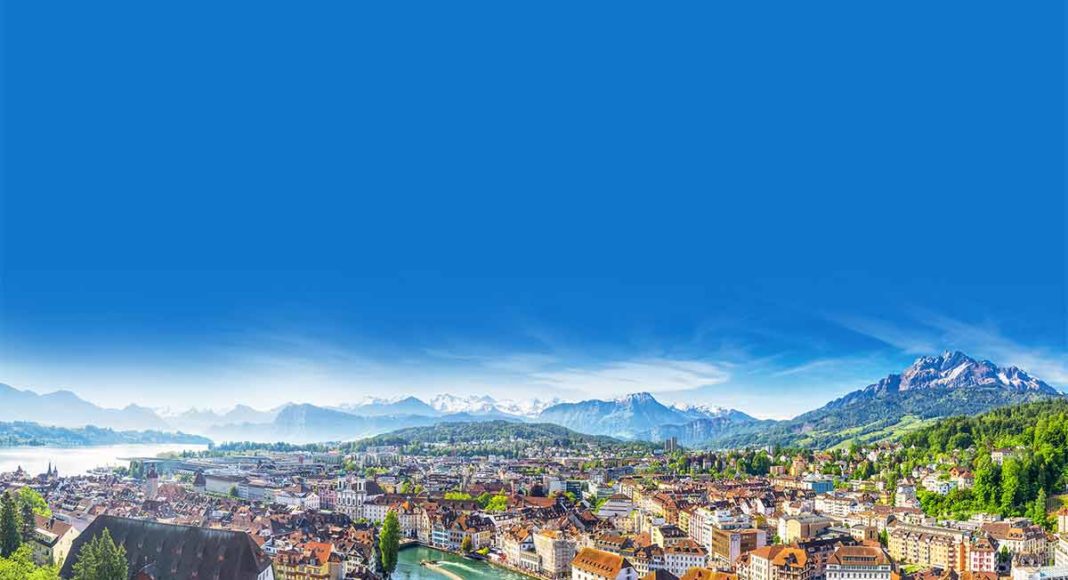Popular with nearly every tourist that visits the country, Lucerne, or Luzern as it is known in German, is the capital of the canton of Lucerne, the Swiss-German speaking part of central Switzerland. The City is known primarily for its stunning medieval architecture and breath-taking location at the base of some of the most spectacular snow-capped Alpine peaks in Europe, Mt. Rigi, Mt. Pilatus, Mt. Titlis, and Jungfraujoch.
Lucerne is relatively small and easy to explore, with most attractions within easy walking distance of the rail network. The City itself is only an hour’s train ride from the Zurich airport, and with the Swiss Travel Pass allowing for unlimited travel on trains, buses, and boats as well as discounts on mountain railways, getting around is a cinch.
The town itself has much to offer, with some of the most spectacular Alpine rides just on the outskirts of the city. However, we will leave those for a later date; here we will focus on six of the most stunning attractions you can find within the city of Lucerne.
Old Town

The Old Town of Lucerne, on the right bank of the Reuss a great spot to start your sightseeing tour of Lucerne. It is the historic core of the city and will treat your eyes to beautiful painted facades and oriel windows of perfectly preserved medieval buildings, cobblestone streets, and an attractive square, Weinmarkt. The shops and boutiques that populate the Old Town Also make it a great place to come for a little bit of shopping. It is also where you will find some of the best restaurants and cafes in the city.
Chapel Bridge

Stepping toward the banks of the river in Old Town, you will find what is easily the most characteristic sight in Lucerne – the Chapel Bridge (Kapellbrücke). Built in the year 1333, this medieval wooden footbridge is the oldest surviving truss bridge in the world and the icon of Lucerne. It runs diagonally for 200 metres, crossing the Reuss River and linking the Old Town with the right bank. The bridge was nearly destroyed in a fire in 1993 but was completely restored. However, some of the fire damage can still be seen on the remaining 17th-century pictorial panels that can be found under the eaves of the bridge. The bride itself, adorned with flowers in the summer months and snow in the winter, is simply stunning to behold and makes for a great photo opportunity. Beside the bridge is the octagonal Wasserturm, a 34-metre-high 13th-century water tower that was once part of the town’s fortifications.
Lake Lucerne

Known as Vierwaldstattersee in German, which translates to Lake of the Four Forest Cantons, Lake Lucerne is a stunning body of water 38-kilometre-long. As the name implies, it is surrounded by four cantons – Uri, Schwyz, Unterwalden and Lucerne. There are several boats and yachts that can take you on panoramic sightseeing cruises of the lake. If you are visiting Lucerne between May to September, you could even catch an early-20th-century paddle steamer. They even offer crossing from Lucerne to Flüelen complete with full three-course meals aboard the ship salon, should you feel so inclined.
Jesuit Church

Situated on the southern bank of the River Reuss, is the famous Jesuit Church of Lucerne with its twin onion-domed towers dominating the skyline. Built from 1666 to 1673 and consecrated in 1677, this was the first large Baroque-style church to be built in Switzerland. When it first opened, the interior of the church wasn’t quite complete. It was eventually updated to the Rococo style in 1750, with an outstanding painted ceiling and ornate faux marble side altars. The church also holds concerts on its magnificent organ, so it may be worth your while to check the schedule and time a visit accordingly.
Lion Monument

Another of Lucerne top attractions is the Lion Monument of Lucerne. Located just north of Löwenplatz, the monument is a large rock relief designed by Danish sculptor Bertel Thorvaldsen and hewn in by Lukas Ahorn in 1820. The monument commemorates the death of 26 officers and over 700 soldiers who were killed while protecting King Louis XVI during the attack on the Tuileries in the French Revolution in 1792. It portrays a dying lion impaled by a spear, covering a shield bearing the fleur-de-lis of the French monarchy; beside him is another shield bearing the coat of arms of Switzerland. The inscription below the sculpture lists the names of the officers and gives the approximate numbers of soldiers who died and survived.
Glacier Garden

Located near the Lion Monument is a remarkably interesting natural attraction that was formed during the ice age called the Glacier Garden. It was first discovered in 1872 and consists of polished glacier rock, erratic boulders dropped by the retreating ice, and a group of 32 potholes that were formed at the base of waterfalls of melting glacial ice. At the Glacier Garden, you will also find 20-million-year-old fossils of shellfish and palm fronds. Located at the Garden are also interactive exhibits explaining the impact of climate change and the famous Alhambra mirror maze, made with 90 mirrors and dating back to 1896. Higher up is an observation tower that will treat you to stunning views of Lucerne and Mount Pilatus in the background.

